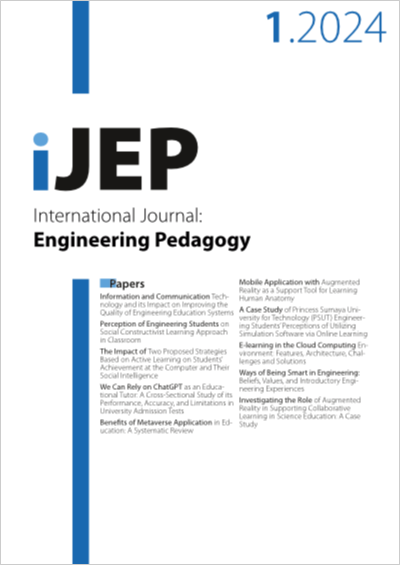E-learning in the Cloud Computing Environment: Features, Architecture, Challenges and Solutions
DOI:
https://doi.org/10.3991/ijep.v14i1.47109Keywords:
Cloud computing, Education Systems, E-learning, Distance education, Engineering education.Abstract
The need to constantly and consistently improve the quality and quantity of the educational system is essential. E-learning has emerged from the rapid cycle of change and the expansion of new technologies. Advances in information technology have increased network bandwidth, data access speed, and reduced data storage costs. In recent years, the implementation of cloud computing in educational settings has garnered the interest of major companies, leading to substantial investments in this area. Cloud computing improves engineering education by providing an environment that can be accessed from anywhere and allowing access to educational resources on demand. Cloud computing is a term used to describe the provision of hosting services on the Internet. It is predicted to be the next generation of information technology architecture and offers great potential to enhance productivity and reduce costs. Cloud service providers offer their processing and memory resources to users. By paying for the use of these resources, users can access them for their calculations and processing anytime and anywhere. Cloud computing provides the ability to increase productivity, save information technology resources, and enhance computing power, converting processing power into a tool with constant access capabilities. The use of cloud computing in a system that supports remote education has its own set of characteristics and requires a unique strategy. Students can access a wide variety of instructional engineering materials at any time and from any location, thanks to cloud computing. Additionally, they can share their materials with other community members. The use of cloud computing in e-learning offers several advantages, such as unlimited computing resources, high scalability, and reduced costs associated with e-learning. An improvement in the quality of teaching and learning is achieved through the use of flexible cloud computing, which offers a variety of resources for educators and students. In light of this, the current research presents cloud computing technology as a suitable and superior option for e-learning systems.
Downloads
Published
How to Cite
Issue
Section
License
Copyright (c) 2023 Haider TH.Salim ALRikabi, Mohammed Jawad Al_Dujaili, Mohammad K. Abdul-Hussein, Huda Abbas Kanber, Ibtihal Razaq Niama ALRubeei

This work is licensed under a Creative Commons Attribution 4.0 International License.



